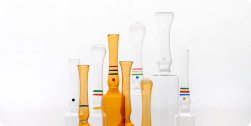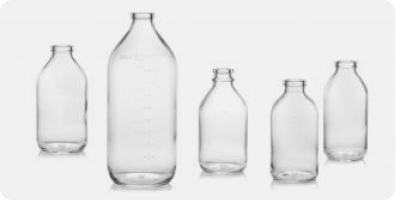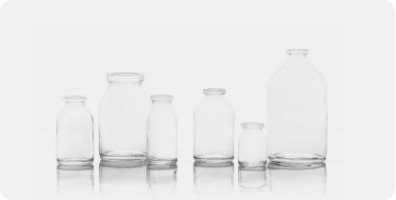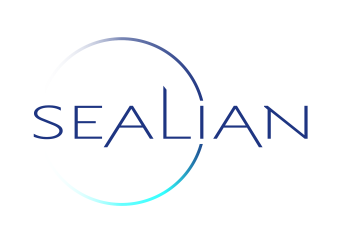Did you know that glass is the only form of packaging with infinite recycling potential? Described by Nature as ‘The hidden gem in a carbon-neutral future’ [1], glass is made from natural and abundant raw materials, sand, soda ash and limestone, and can be 100% recycled without any loss of quality or product integrity throughout the process. This is unlike its plastic counterparts, which can take up to 500 years to decompose in landfills and can usually only be recycled one or two times.[2]
Glass is the most sustainable pharmaceutical packaging solution; which for modern consumers is just as important as the product it is protecting inside.[3] In Europe alone, three quarters of consumers say that they prefer to buy products with environmentally-friendly packaging.[4] These concerns have been accelerated by the Covid-19 pandemic, with nearly half of consumers since wanting to reduce their carbon footprint and 59% more concerned about the environmental impact of brands they use.[5] Sustainability has become top of the agenda and demand is increasing for businesses and governments to make more sustainable choices. As a glass manufacturer, this is where SGD Pharma comes in.
With the world becoming more sustainably aware and consumer habits shifting to better consider the environment and health in their purchases, glass is taking the spotlight as the ideal packaging choice. According to consumer research commissioned by the European Federation of glass packaging makers, FEVE, 91% of Europeans would recommend glass as the best packaging material [6] and three in four would opt for beauty fragrance and medical products in glass over any other packaging material.[7] The pharmaceutical industry must therefore keep up and adapt in order to respond to the ever-growing demand for sustainably packaged drug products.
Commitment to sustainability
Manjt Singh, Chair of the Pharmaceutical Supply Chain Initiative (PSCI) describes the goal of sustainable sourcing as “to improve the ethical, environmental and social performance of suppliers and ultimately mitigate any negative impacts found within the supply chain.”[8] As a leading pharmaceutical glass packaging supplier, SGD Pharma is committed to contributing to these improvements. Having always invested in sustainable actions, evidenced by our Platinum EcoVadis rating, SGD Pharma will continue to enhance its sites to promote the best health and safety practices for employees, and to limit its impact on the environment.
By nature, the manufacturing of glass requires large amounts of energy, which results in greenhouse gas (GHG) emissions. However, we strive to continuously improve the energy efficiency of our industrial process by investing in the most advanced technologies for our furnaces and continuously upgrade our installations throughout the industrial process. Over the past few years alone, SGD Pharma has invested in renovation projects at multiple production facilities to upgrade furnaces to reduce energy consumption and carbon emissions. We are already using the technology that exists to make glass production more environmentally friendly – and we will continue to develop new ways to further improve efficiency.
At SGD Pharma we have developed an internal energy management standard (based on ISO 50001) that continually improves the energy performance at all SGD Pharma manufacturing plants and develops a group culture of energy performance. As of 2021, five of our plants, Kipfenberg (Germany), Zhanjiang (China), Vemula (India), Sucy-en-Brie (France) and Saint-Quentin-Lamotte (France), are ISO 14001 certified (the international standard for environmental management systems). We have a clear ambition for waste management: reduce, reuse and recycle. For example, during the fabrication process at our plants, we use on average 26.94% of internal cullet*. By using recycled glass in the process, we use less energy from the raw material decarbonization, which in turn further reduces GHG emissions.
Sucy: A case study
The latest SGD Pharma development project is at our 100+ year-old Sucy-en-Brie glass vial manufacturing facility outside of Paris, focusing on industrial improvements to increase worker safety and implement sustainable changes. This major transformation will enable SGD Pharma to better service its global customers and reduce its impact on the environment. The furnace reconstruction in 2021 has already reduced our energy consumption by 10% so far. As well as this, the investment has been focussed on optimizing water consumption and resource efficiency to reduce waste. The next step for the Sucy-en-Brie plant is the reconstruction of a third furnace and implementation of the best technologies that use electricity and natural gas power for better heat recovery to further reduce Sucy’s GHG emissions.
How can we make glass greener?
So far, the glass industry has halved the amount of energy used per tonne of glass over the last 40 years [9] and the United Nations (UN) plan to cut carbon emissions and reach net-zero by 2050.[10] At SGD Pharma we will continue to work towards our environmental, social and ethical goals in 2022 and invest in initiatives to further reduce our carbon emissions. Stay tuned for an update on our efforts.
We are pleased that the UN have dedicated 2022 as the international year of glass (#iyog22)– it is a great opportunity to recognize its sustainable potential. The pharmaceutical industry is already contributing towards sustainable sourcing through industry-led, collaborative initiatives that are working to build responsible supply chains such as ‘Close the Glass Loop’ and we are keen to get involved.[11] See the further reading below to find out more:
*Cullet: Recycled broken or waste glass
[1] Nature, Glass is the hidden gem in a carbon-neutral future, November 2021, https://www.nature.com/articles/d41586-021-02992-8
[2] Statista, Lifecycle of selected plastic products, https://www.statista.com/statistics/1192549/lifecycle-selected-plastic-product/
[3] Glass Hallmark, Future made clear report, 2022 https://glasshallmark.com/wp-content/uploads/2022/01/Future-Made-Clear-Report.pdf
[4] WARC, The Rise of Conscious Consumerism and its Impact on the FMCG Sector
[5] Global Data, GlobalData's TrendSights 2021 – Trends To Watch,p. 16
Euromonitor International, Top 10 Global Consumer Trends
[6] Feve, InSites Consulting/FEVE, Packaging & Recycling survey 2020 https://feve.org/about-glass/facts-product-details/
[8] PSCI, Annual Report 2020, https://pscinitiative.org/resource?resource=985
[9] Vitaliano Torno, The role of sustainable packaging in the circular economy, FEVE, International Year of Glass Opening Ceremony.
[10] UN, For a liveable climate: Net-zero commitments must be backed by credible action https://www.un.org/en/climatechange/net-zero-coalition
[11] 2022 CPhI trends report https://informamarkets.turtl.co/story/pharma-trends-2022/page/1/16



































